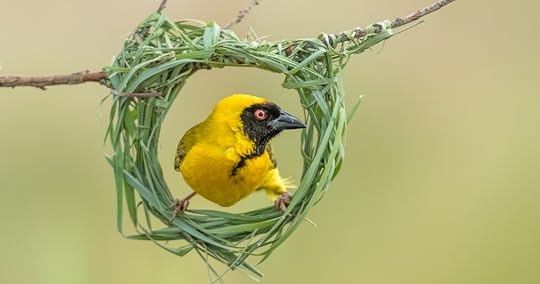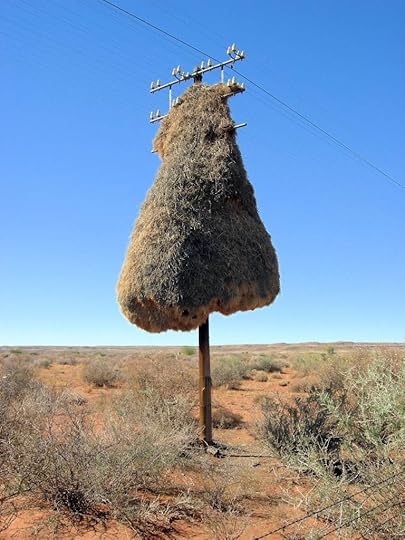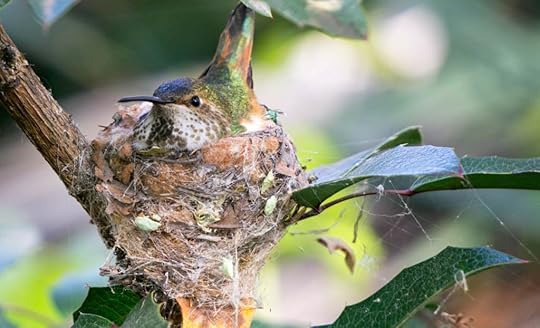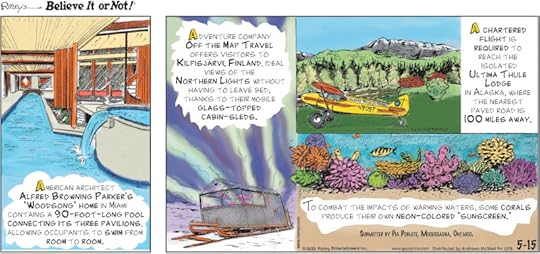Ripley Entertainment Inc.'s Blog, page 87
May 17, 2022
World First: Ripley’s Aquariums Research Efforts Birth Sand Tiger Shark
Featured in Ripley's Believe It or Not!

Ripley’s Aquariums have made history with the world’s first successful birth by artificial insemination of a sand tiger shark! The pup, named “Rip” after company founder Robert LeRoy Ripley, marks a major step for its species around the world.
Jaw-some NewsRipley’s Aquariums are at the forefront of sand tiger shark research and are working to better understand their reproductive behaviors. Unfortunately, sand tiger sharks have a low natural reproductive rate, with females only producing up to two pups every two or three years. Globally, sand tiger sharks are listed as a vulnerable species, and in some areas of the world are considered endangered.
Rip’s journey started back in May 2021, when a female sand tiger at Ripley’s Marine Science Research Center in Myrtle Beach, South Carolina, was artificially inseminated. Sand tiger sharks have a gestation period of eight to 12 months, and she soon began to show signs of pregnancy.
Ripley’s Veterinary and Husbandry Teams kept a vigilant, 24-hour watch on her until Rip was born on March 24, 2022. Today, mom and baby shark remain healthy, and Rip currently weighs 17.4 pounds and measures 36.6 inches in total length. Rip is healthy and growing at a natural rate, just as he would in the wild!

Smile, Rip!
A Fin-tastic Future“Rip represents the future and an important moment in history for his species,” shared Tim Handsel, Vice President, Husbandry, Ripley’s Aquarium, “When research, science, and care come together, the future of vulnerable species like the sand tiger shark looks brighter. This pup means a great deal to Ripley’s Aquariums and the survival of the species around the world.”
Rip will remain behind the scenes at Ripley’s Marine Science Research Center until he has reached a few additional milestones in his development. Follow Ripley’s Aquarium of Myrtle Beach on Facebook to stay in the know on “pup-dates” and news concerning Rip’s growth!
To learn more about Rip and Ripley’s Aquarium of Myrtle Beach, visit www.ripleyaquariums.com/myrtlebeach
EXPLORE THE ODD IN PERSON! Discover hundreds of strange and unusual artifacts and get hands-on with unbelievable interactives when you visit a Ripley’s Odditorium!Source: World First: Ripley’s Aquariums Research Efforts Birth Sand Tiger Shark
CARTOON 05-17-2022
May 16, 2022
CARTOON 05-16-2022
May 15, 2022
CARTOON 05-15-2022
May 14, 2022
CARTOON 05-14-2022
May 13, 2022
Space Jellyfish Swims Across Sky After SpaceX Launch
Featured in Ripley's Believe It or Not!

Early morning stargazers from Florida all the way up to Georgia and beyond were treated to a magnificent display as a rocket launch sent what’s known as a “space jellyfish” swimming through the skies.
At 5:42 a.m. EDT on May 6, SpaceX launched 53 Starlink satellites into orbit on its Falcon 9 rocket, splattering a jellyfish-shaped luminous blob in its trail, delighting those who braved the early wake-up call to witness the event.
A Jellyfish Out of WaterWhile the Florida coast is certainly known for jellies, they’re usually of the brainless and boneless variety, most commonly found floating through the shallow waters, ready to sting at the mere threat of being touched.
A long way away from its seabound namesake, the space jellyfish was formed purely by science, with its long, bulbous shape resulting from the exhaust of the Falcon 9’s rocket engine nozzle. Due to the pressure difference between the gas in the rocket nozzle and the atmosphere’s ambient air, the gas lowered its own pressure to match its surroundings by expanding upon release.
#spacex Starlink mission launching into Orbital Sunrise this morning! As seen from Tampa, Florida.
Photo: me for @SuperclusterHQ pic.twitter.com/TpegAi8gEA
— Erik Kuna
(@erikkuna) May 6, 2022
As Chris Combs, an aerodynamics and mechanical engineering professor at the University of Texas at San Antonio, put it, “In under-expanded exhaust you get expansion fans at the nozzle exit to decrease pressure and match background: jellyfish, at high altitude.”
The Time Was RightWhile that explains the shape, the mesmerizing glow of the space jellyfish was simply a matter of perfect timing.
According to Combs, the early morning launch allowed just enough sun to peek over the horizon to illuminate the exhaust’s expansion when it entered a high altitude, causing it to glow against the still-dark-from-the-ground-level sky.
This optical illusion was spotted hundreds of miles away, with witnesses’ images and videos varying by location. While some viewers weren’t ready for that space jelly, others captured a simple silver streak flashing across the sky or, from another angle, what looked like more of a billowing cloud.
Sending Jellies to Space Since 1991
Phenomenal
of the #SpaceX
launch from Pawleys Island Pier. Great shot Travis Huffstetler! pic.twitter.com/soP8DZqOtl
— Ed Piotrowski (@EdPiotrowski) May 6, 2022
The separation between sea and space can seem pretty vast, but the more we get to know about our deep-sea neighbors, space often seems like it may as well be right here on Earth, and jellyfish are no exception!
While a well-lit jellyfish is about as alien-looking as a creature can be, did you know that NASA actually sent these intergalactic invertebrates to space?
Back in 1991, NASA scientists decided to study how jellyfish would react to the lack of gravity in space and, ultimately, how they’d behave once they returned to their home planet. This curiosity resulted in the first Spacelab Life Sciences Mission, during which launched 2,478 moon jelly polyps aboard the space shuttle Columbia.
Though the jellyfish that developed in space weren’t far off in physical appearance from their Earthly counterparts, their motor skills didn’t fare so well, showing irregular movement and pulsing as if they had collectively developed vertigo!
By the end of the experiment, over 60,000 jellyfish were orbiting the planet, but little did they know (because of the lack of brains, of course), they weren’t alone.
Outer Space JelliesThough real jellyfish in space and the SpaceX jelly are impressive, somewhere out there, about 300 million light-years away in the Abell 2877 galaxy cluster, floats a space jelly explosion of epic proportions.
In March 2021, a paper published in the Astrophysical Journal revealed the discovery of a “cosmic jelly” more than 1 million light-years wide!
The super space jelly — or “radio phoenix” — results from a massive eruption of a series of black holes, and “holds a world record of sorts,” according to lead study author Torrance Hodgson of Perth, Australia’s International Centre for Radio Astronomy Research.
Spotted through a radio telecope, the jelly is only visible in a narrow band of radio light, appearing bright at FM radio frequencies but essentially disappearing at 200 megahertz.
“No other extragalactic emission like this has been observed to disappear anywhere near so rapidly,” said Hodgson.
By Meghan Yani, contributor for Ripleys.com
EXPLORE THE ODD IN PERSON! Discover hundreds of strange and unusual artifacts and get hands-on with unbelievable interactives when you visit a Ripley’s Odditorium!Source: Space Jellyfish Swims Across Sky After SpaceX Launch
CARTOON 05-13-2022
May 12, 2022
When Statehood For Moosylvania Was Thwarted By The Cuban Missile Crisis
Featured in Ripley's Believe It or Not!

Things have a way of snowballing, and history provides plenty of cases in point. Chief among these is the Cold War, which kept the world on pins and needles for three decades starting in the 1950s. As tensions reached a breaking point during the Cuban Missile Crisis of 1962, few people found humor in these events. But Rocky and Bullwinkle’s creator, Jay Ward, represented the exception, still capable of making light of a world on the brink of atomic doom.
People saw Rocky and Bullwinkle as a controversial social satire when episodes first aired from 1959 to 1964. Inside Hook has even likened it to the South Park of its day. In one interview, Ward noted, “We’ve not only offended people — without meaning to, of course — but we’ve also had trouble with countries.” This “trouble” would include Ward’s run-in with the White House, the result of an ill-fated campaign to create America’s next state: Moosylvania.
Here’s the story of the statehood that would never be and how the Cuban Missile Crisis overshadowed Ward’s imaginative charade.
Campaigning for MoosylvaniaThe idea for Moosylvania began with an episode of Rocky and Bullwinkle showing Bullwinkle J. Moose on vacation to a “dreadful little place called Moosylvania.” Remember that thing we said earlier about snowballing? Well, such was the case with the idea of this imaginary location. Soon, fan mail poured in from across the nation as people became enamored with the notion of Moosylvania.
Ward decided to act by campaigning for a real place that could serve as Moosylvania. To bring this vision to life, he leased a small island in Minnesota on the border with Canada for $1,500. Realizing he would need to recruit supporters for his campaign, he turned to Howard Brandy, a one-time publicist for Rin Tin Tin, to collaborate. Together, they spearheaded a movement to petition President John F. Kennedy for statehood of their mythical and miniature land.
Of course, Ward and Brandy realized they needed to demonstrate just how popular their idea was. So, they drove across the country in a vibrantly hued panel van featuring a calliope belting out circus music. Along the way, they got plenty of attention and petition signatures. They hoped to complete the deal and then get the president to declare the tiny island “the Only State in the Union With an Entirely Non-Resident Population.” But despite the brilliance of their satirical plan, fate had other ideas: the United States had found itself embroiled in a nuclear standoff with Russia.
Drumming Up Publicity for an Imaginary LandBesides the colorful Rocky and Bullwinkle van touring the country, Ward proved a master of publicity and knew how to get the public interested in his idea. For example, the Amarillo Globe-Times ran an article on October 10, 1962, where they spotlighted the whimsical concept of Moosylvania.
The paper quoted Ward explaining that Moosylvania’s non-existent residents “stood quietly as Congress has passed them over in order to grant statehood to such fledgling territories as Hawaii and Alaska.” Ward urged people to take action by sending him letters in support of statehood. He promised that they’d receive a decal for their car and a yellow lapel pin for their letter-writing efforts.
Embed from Getty Imageswindow.gie=window.gie||function(c){(gie.q=gie.q||[]).push(c)};gie(function(){gie.widgets.load({id:'Q_EnBHIrSdVbA8uIeQWJOQ',sig:'K5xZS7StihVFA7YmBMXrs90R-W_QLGzc12L8MGSU3kI=',w:'594px',h:'490px',items:'1292617333',caption: false ,tld:'com',is360: false })});
The next day, Luke Feck, writing for the Cincinnati Enquirer, added his two cents on the topic of Moosylvania: “To the thorny problems of Cuba, Berlin and how to redecorate Lincoln’s bedroom, I add the flea bite of a plea for admission into the Union by the Unincorporated Territory of Moosylvania.” The gauntlet dropped, Ward meant business.
Unfortunate Timing for MoosylvaniaAs Ward and Brandy toured the United States, their campaign gained momentum. According to Keith Scott’s The Moose That Roared, they decided to deliver the petition signatures in person. So, it was “White House or bust” for the bus.
Their timing couldn’t have proven worse, however. By October 13, 1962, photos taken by a U-2 over Cuba showed evidence of ballistic missiles, and Washington, D.C., scrambled to gain the upper hand against the USSR without inadvertently sparking atomic catastrophe.

Credit: Ruby Jennings via Wikimedia Commons (CC BY-SA 4.0)
By the October 27, events spiraled out of control as the Soviets and Americans struggled to avoid a full-blown conflict. As the public stocked their fallout shelters and remained glued to news radio and television, Ward and Brandy pulled up to the White House. Ward stepped out of the bus in a Napoleon-inspired costume and walked up to the guard who motioned the van to stop, per Helen Thomas’ Thanks for the Memories, Mr. President.
The exchange proved heated and impolite on the part of security. The “you shall not pass” given, Ward and Brandy left the White House in exasperation with Ward exclaiming, “[The president] has a sense of humor.” But Ward and Brandy didn’t realize that his humor had been worn thin by the specter of mutually-assured obliteration.
Thankfully, the tensions between the Soviet Union and America ramped back down, and Americans breathed a sigh of relief. Although Ward and Brandy continued the fight for Moosylvania into November, even hosting a parade, the Rocky and Bullwinkle inspired state ultimately became a Cold War casualty.
By Engrid Barnett, contributor for Ripleys.com
EXPLORE THE ODD IN PERSON! Discover hundreds of strange and unusual artifacts and get hands-on with unbelievable interactives when you visit a Ripley’s Odditorium!Source: When Statehood For Moosylvania Was Thwarted By The Cuban Missile Crisis
CARTOON 05-12-2022
May 11, 2022
Six Seriously Strange Nests Built By Birds
Featured in Ripley's Believe It or Not!

Now that spring has finally sprung, you’ve probably heard baby birds peeping from nests in trees, under balconies, or even flower boxes. But not all birds build round structures from sticks and straw.
Some birds go the extra mile to create wonderfully weird constructions from sand, spiderwebs, and even spit! Here are some of our favorite nifty nests built by avian architects.
1. Sewing SongbirdsThe tailorbird is a small, unassuming songbird that probably wouldn’t astound you at first glance. However, beneath their green and gray plumage hides a skilled stitcher.
Tailorbirds actually “sew” leaves together to make their nests. Of course, all the grunt work is left to the female. She’ll collect strong, supple leaves that will provide a solid foundation for her home. The female tailorbird ensures the leaf is the right fit by wrapping it around herself. After finding the perfect leaf, she will use her beak to make a series of tiny holes along its edge. Afterward, she’ll carefully thread plant fibers through the holes, connecting additional leaves together until her nest is complete. She’ll even build a roof so her babies stay dry all season long.
2. A Structure Made from SpitWhat’s the strangest thing you’ve ever eaten? Probably not an edible nest made from bird saliva.
Called bird’s nest soup, the dish is a delicacy in southwest Asia. The nest is made by a swiftlet, who uses its own hardened saliva to build its home by depositing layers of its spit on rocks deep in caves.

In areas where bird’s nest soup is popular, folks have created multi-storied house for these birds to nest in so as to easily obtain their spit. In fact, the estimated 30,000 swiftlet houses in Malaysia make up $400 million of the national economy.
3. A Communal EffortWhile most birds prefer to build their nests alone, others take a much more collaborative approach. The sociable weaver — emphasis on the “sociable” here — will join forces with its flock to build an entire apartment complex for its young. The biggest communal nest of any other bird species, these immense structures house over one hundred breeding pairs and can be used for generations.

Credit Sara&Joachim via Wikimedia Commons (CC BY-SA 2.0).
4. Under-the-Sand NestsUnlike most birds that build their nests above the ground, the maleo birds of Sulawesi, Indonesia, assemble their nests under the sand. They aren’t the only bird to do this; megapodes are a family of about 20 ground-dwelling birds who bury their eggs in mounds.

However, while most megapodes will incubate their unhatched chicks by surrounding them with decomposing organic material, the maleo instead relies on their home island’s natural thermal vents to keep their eggs warm. After digging huge a huge hole in the sand, the female lays her eggs and the breeding pair covers the hole with sand. Unfortunately for the chick, right after hatching they have to dig their way to the outside world! That sounds exhausting.
5. A Muddy Mess (Err, Nest)We all know that flamingos are pink birds that can perch on one leg. But did you know they make their nests out of mud? The male and female flamingos work together to build a nest that resembles a small volcano and reaches about 12 inches tall. This towering height helps keep the pink parents’ single egg safe from flooding and hot temperatures.

Credit Ken Billington via Wikimedia Commons (CC BY-SA 3.0).
6. Clever ConstructionSome small birds, such as hummingbirds and kinglets, will hold their tiny nests together using spiderwebs! The arachnids’ silk is lightweight, incredibly durable, and super sticky, making it the perfect glue for avian architecture.

One other benefit to using spiderwebs? It’s stretchy! These itty bitty birds may hatch from eggs the size of a jelly bean or smaller, but they quickly grow and that elastic spider silk ensures their nest will grow with them!
Bonus: Bird Nest FailWhile the tailorbird and the maleo can feel proud of their nesting accomplishments, we can’t say the same thing about pigeons. For some of these “rats with wings,” it’s perfectly acceptable to just throw a few twigs on the ground and call it a day.
Whenever I mess up an experiment I just think of what a pigeon considers a successful nest pic.twitter.com/dgUNQeDINK
— Nick Chiappini
️
✊
(@ndchiappini) April 12, 2021
While not all pigeon nests are as laughably lazy as the one above, let’s just be glad these birds don’t build homes for humans.
By Steph Weaver, contributor for Ripleys.com
EXPLORE THE ODD IN PERSON! Discover hundreds of strange and unusual artifacts and get hands-on with unbelievable interactives when you visit a Ripley’s Odditorium!Ripley Entertainment Inc.'s Blog
- Ripley Entertainment Inc.'s profile
- 52 followers









